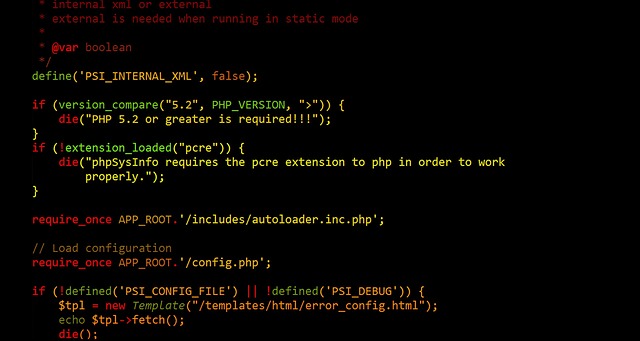# Essential Strategies for Optimizing Your SEO to Enhance Website Visibility and Drive Traffic
In the digital age, a robust online presence is paramount for any business seeking to thrive. Search Engine Optimization (SEO) serves as a cornerstone for enhancing website visibility and driving organic traffic. Among the myriad of strategies available, keyword optimization stands out as a fundamental practice that can significantly influence your online success. This article delves into essential strategies for optimizing your SEO through effective keyword utilization.
## Understanding Keyword Research
To embark on a successful SEO journey, one must first grasp the concept of keyword research. This process involves identifying the terms and phrases that potential customers use when searching for products or services similar to yours. By understanding these keywords, businesses can tailor their content to meet the needs of their audience.
Diving deeper into keyword research, tools such as Google Keyword Planner, SEMrush, and Ahrefs can provide valuable insights. These platforms reveal search volume, competition, and related keywords, allowing businesses to make informed decisions. A well-rounded keyword strategy should encompass a mix of short-tail and long-tail keywords. Short-tail keywords, while more competitive, typically attract a larger audience. Conversely, long-tail keywords, which are more specific, often yield higher conversion rates as they cater to users with clear intent.
Moreover, analyzing competitors’ keyword strategies can unveil opportunities and gaps in your own approach. By examining the keywords that drive traffic to competitor websites, you can identify high-value terms that may have been overlooked. Ultimately, the objective of keyword research is to create a comprehensive list of target keywords that align with your business goals and customer needs.
## Crafting Quality Content Around Keywords
Once you have identified your target keywords, the next critical step is crafting quality content around them. High-quality content not only enhances user experience but also signals to search engines that your website is a credible source of information. Therefore, integrating keywords naturally into your content is essential.
Beginning with the creation of engaging blog posts, articles, and product descriptions, it’s vital to ensure that keywords are woven seamlessly into the text. Overstuffing content with keywords can lead to penalties from search engines, so maintaining a balance is crucial. Aim to include keywords in key areas such as titles, headers, and meta descriptions, as these elements are pivotal for both SEO and user engagement.
Additionally, consider the user’s intent when creating content. Informational, navigational, and transactional keywords serve different purposes, and understanding this distinction can guide your content strategy. For instance, if a keyword indicates that users are seeking information, crafting an informative blog post or how-to guide would be appropriate. On the other hand, transactional keywords may warrant product pages or promotional content.
Incorporating multimedia elements such as images, videos, and infographics can also enhance the quality of your content. These elements not only break up text but also keep users engaged, ultimately reducing bounce rates and improving overall site performance. Remember, the goal is to provide value to your audience while strategically positioning your keywords.
## Optimizing On-Page SEO Elements
While keyword optimization is crucial, it is equally important to focus on on-page SEO elements to maximize your website’s visibility. On-page SEO refers to the practices implemented directly on your website to improve its ranking on search engine results pages (SERPs). Key components include title tags, meta descriptions, header tags, and URL structures.
Title tags are the first impression users have of your content in search results. Crafting compelling, keyword-rich titles can significantly impact your click-through rates. Aim for titles that are concise yet descriptive, ideally incorporating your primary keyword towards the beginning. Similarly, meta descriptions should provide a succinct summary of the page’s content while enticing users to click through.
Header tags (H1, H2, H3, etc.) play a vital role in organizing content and improving readability. Utilizing these tags effectively not only enhances user experience but also allows search engines to understand the structure of your content. Incorporate relevant keywords into your headers to reinforce the topic of your page.
Furthermore, optimizing your URL structure is essential for both users and search engines. URLs should be clean, descriptive, and include targeted keywords. A well-structured URL not only aids in indexing but also helps users understand the content of the page before clicking.
Lastly, don’t overlook the importance of internal linking. By linking to other relevant pages within your website, you can improve navigation, increase the time users spend on your site, and distribute page authority. This strategy not only enhances user experience but also signals to search engines the interconnectedness of your content.
## Conclusion
In conclusion, optimizing your SEO through effective keyword utilization is a multifaceted approach that requires diligent research, quality content creation, and attention to on-page SEO elements. By understanding your audience’s search behavior and crafting content that meets their needs, you can significantly enhance your website’s visibility and drive organic traffic.
As the digital landscape continues to evolve, staying informed about SEO best practices and adapting your strategies accordingly is crucial. Embrace the power of keyword optimization, and watch as your online business flourishes in an increasingly competitive marketplace. Remember, the journey to SEO success is ongoing, but with the right strategies in place, you can position your website for long-term growth and visibility.

